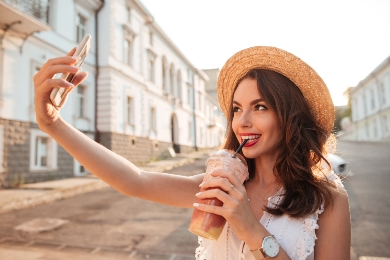06 September 2017
 From movies to magazines, traditional media has long been criticised for perpetuating unrealistic beauty standards—thin ideals that generate low self-esteem among women and girls.
From movies to magazines, traditional media has long been criticised for perpetuating unrealistic beauty standards—thin ideals that generate low self-esteem among women and girls.
In a new meta-analysis study from the University of South Australia, researchers have discovered a link between increased use of social networking sites and the internalisation of the thin ideal—the degree to which women strive to achieve an ideally slim female body.
“When people regularly engage with social networking sites, like Facebook, the images to which they’re exposed encourage a psychological adoption of unrealistic beauty ideals, and this can lead to poor body image and low self-esteem,” says John Mingoia, PhD student with UniSA’s School of Psychology, Social Work and Social Policy.
“The greater the use of social networking sites, the more likely it is for women to be dissatisfied with their body. And given the rise of social media, this has the potential to place billions of female social media users at risk.”
The study assessed 1829 female participants, aged between 10 to 46 years, across six independent studies and found that those who predominantly used social networking sites for posting or viewing photographs, were at greater risk of body dissatisfaction, as opposed to those who used the sites more broadly.
“People using social media to post and view appearance-related items—things like photos, profiles, videos or selfies—were more likely to internalise the thin ideal,” Mingoia says.
“And despite the fact that social media lets users create, upload and control content themselves, the same unattainable body ideals we see in traditional media are also reflected in the online environment.”
Worldwide, across a day, the average person uses social media for more than 10 hours; over one billion people are exposed to Facebook; and 3.2 billion new photographs are uploaded onto social networking sites.
“The number of photos that are uploaded to social networking sites per day is astounding. And given the relationship between photos on social networking sites and the perceptions of body image, this should raise significant red flags for the well-being and self-esteem of its users.
“As a society, we must be aware of the role social networking sites can play in women’s internalisation of poor body image and we must seek interventions to help reduce the risk of body dissatisfaction.
“Media literacy training and educating users about the way photographs can be quickly and easily enhanced to portray idealised, but distorted creations, are critical if we are to disperse the toxic beauty myth on social media.
“And given the negative impact that unrealistic body images can have on women and girls, any action we take to help reduce the risk, can only be seen as a positive.”
Media contact: Annabel Mansfield mobile: 0417 717 504 email: Annabel.Mansfield@unisa.edu.au


